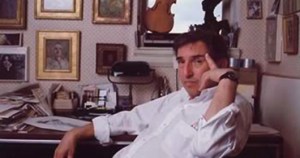 Last week, The New York Review of Books, the biweekly chronicle of American intellectual life that will turn 45 next year, lost one of its founding editors when Elizabeth Hardwick passed away at the age of 91. It was a deeply sad moment for The Review, which had lost another beloved editor, Barbara Epstein, just a year and a half ago. And just as when Epstein had passed, the death of Elizabeth Hardwick brought about whispers among the city’s cognoscenti: What will happen when Robert Silvers, now the lone editor of The New York Review of Books, decides to take his leave?
Last week, The New York Review of Books, the biweekly chronicle of American intellectual life that will turn 45 next year, lost one of its founding editors when Elizabeth Hardwick passed away at the age of 91. It was a deeply sad moment for The Review, which had lost another beloved editor, Barbara Epstein, just a year and a half ago. And just as when Epstein had passed, the death of Elizabeth Hardwick brought about whispers among the city’s cognoscenti: What will happen when Robert Silvers, now the lone editor of The New York Review of Books, decides to take his leave?
It’s a morbid question, to be sure, but one that inevitably comes up when discussing the publication—which has no heir apparent among its staff of editors and assistants. Mr. Silvers seems to like it that way; on Monday, he pointedly refused to answer questions about who might succeed him as editor when he can no longer do the job. “It’s not a question that’s posing itself,” he said.
Still, it is a time of change at The Review—even if Mr. Silvers remains at the helm for eternity.
This March, the paper will relocate its headquarters to a converted factory in the West Village after more than 40 years spent in the heart of midtown. According to Mr. Silvers, The Review’s current home on the fifth floor of 1755 Broadway—where it has been for the past ten years—is being taken over by Universal Music, which occupies a large portion of the rest of the building and holds an option on the fifth floor that they intend to exercise once The Review’s lease runs out early next year.
(“It’s very funny to see Bob in an elevator with hip-hop stars [like Lil Wayne and 50 Cent] studded with a million diamonds. I will miss that,” says Review publicity manager Jenie Hederman.)
The move will mark the second time in The Review’s history that it has had to change homes: Originally, its offices were in the Fisk Building at 250 West 57th Street, around the corner from where they are now.
The Review’s new space, on the third floor of 435 Hudson Street, is much larger than its current quarters, according to Mr. Silvers. “It’s a large, very airy space with very big windows,” he said. “We’ll be able to spread out our books and have big tables for different categories of books.”
And there is another recent, major change at The Review—this one boasts a less rosy cast. David Levine, the 80-year-old artist whose iconic caricatures have filled the pages of the paper since its very first issue, has developed macular degeneration, an eye condition that has severely impaired his ability to draw the kind of piercing, detailed portraits he is known for.
Mr. Levine, who said he has drawn something like 4,000 caricatures for The Review over the course of his life, said he was diagnosed with the condition several months ago, and has not contributed a new drawing to the paper since.
“If I look at somebody’s face, I can’t tell what it really looks like in detail,” he said. “I can see the general layout, the noses and so on, but if you come into a restaurant where I’m sitting and looking towards the door, I can’t tell until the person gets within five feet of me who it is.”
Mr. Levine said there is no cure for the condition—which, according to the National Eye Institute, is a leading cause of blindness among the elderly—but that he has been working with doctors to regain some of his abilities.
“It didn’t stop [Edgar] Degas,” Mr. Levine said, noting that the Impressionist also suffered from the condition. “He went on to change his way of seeing. He just moved into a rhythm of color and bigger generalities in the way he saw things like hands or faces. … I’m open to that. I’m searching.”
One option Mr. Levine has been exploring is switching from pen and ink to pencil, which would allow him to erase things if he doesn’t nail them right away.
“[My drawings] won’t look so different,” he said. “The details will be handled slightly differently.”
In the meantime, The Review has had to turn elsewhere for its illustrations. Although many of Mr. Levine’s old caricatures still show up—his rendering of Philip Roth graced the cover of the Dec. 6 issue, and he had five more drawings inside—Mr. Silvers said he has been publishing work by other artists, such as Pancho and John Springs, as well as using photographs more frequently than he used to.
Still, with nearly a half-decade of re-publishable work for The Review behind Mr. Levine, and Mr. Silvers running the show, the paper will surely look and feel pretty much the same, even as things, inevitably, change.

